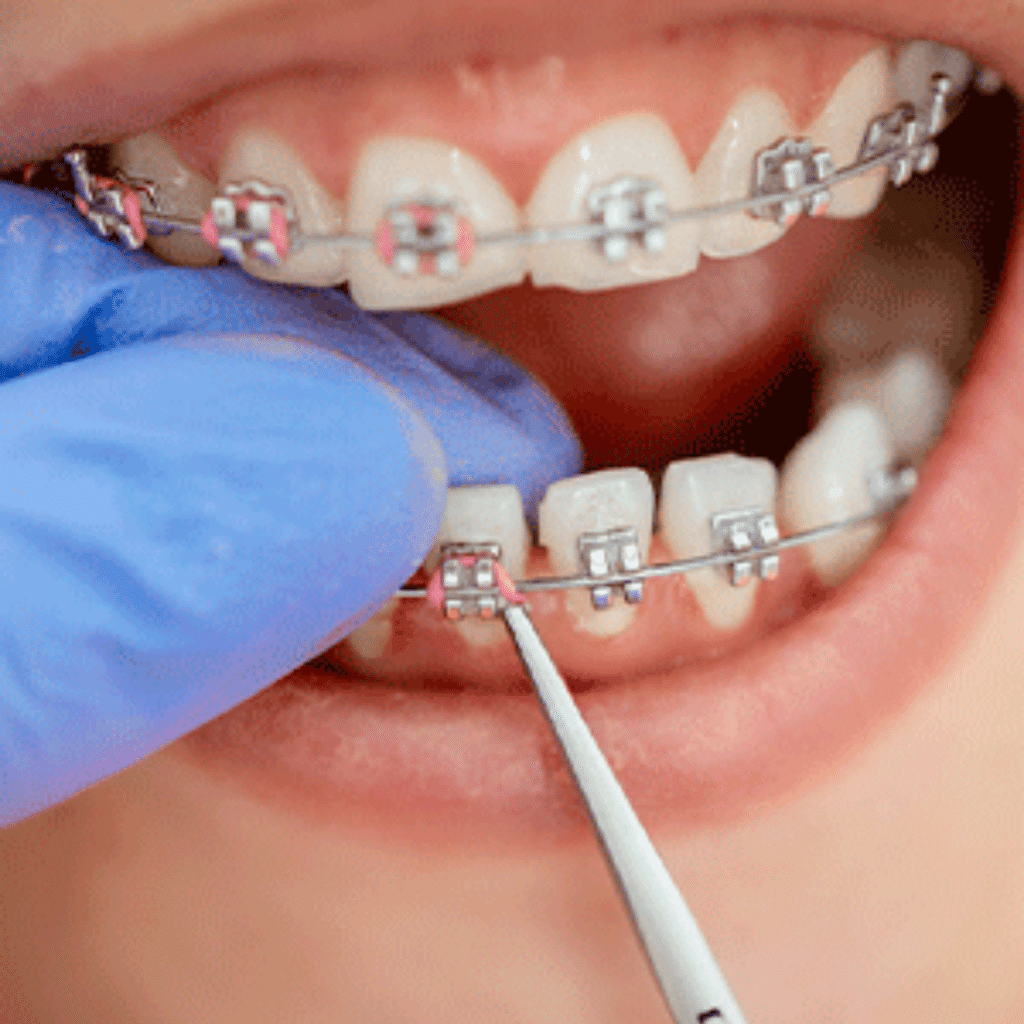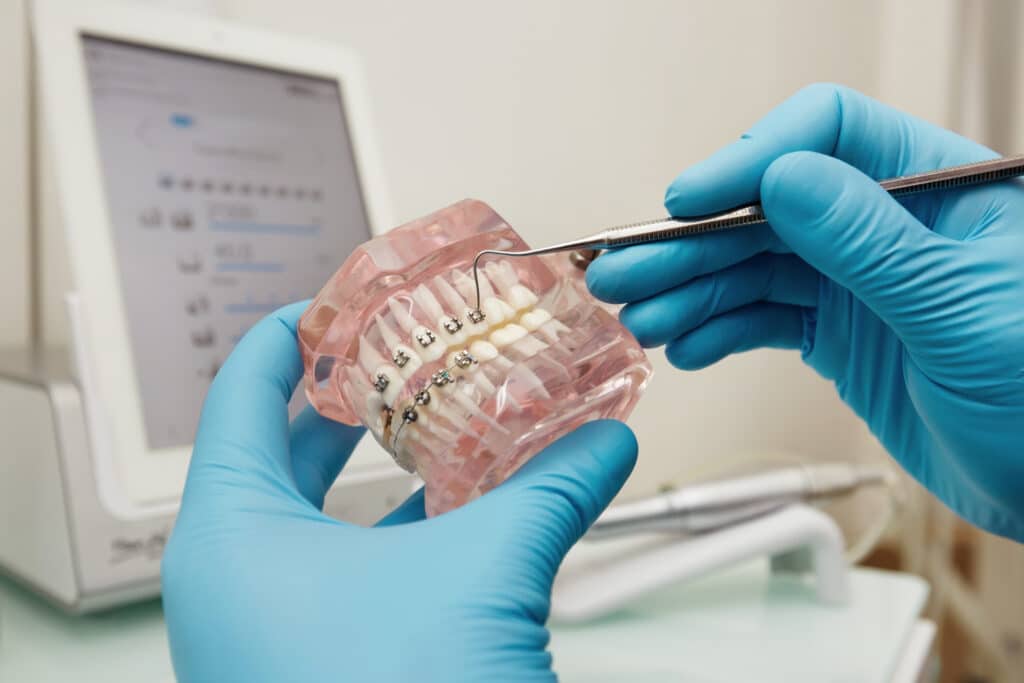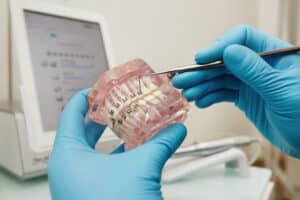Do Braces Hurt? What to Expect During Your First Week
Nearly everyone getting braces wonders the same thing: “How much is this going to hurt?” You’re not alone in having this concern, and we’re here to give you the honest, reassuring answer you need to feel confident about your orthodontic journey.
Understanding what to expect during your first week with dental braces helps you prepare properly and feel at ease throughout the adjustment period. Many patients find that their worries about pain are much worse than the actual experience. With the right information and preparation, you can navigate this transition smoothly.
While some discomfort is normal during your first week with braces, knowing what to expect and having the right strategies makes the experience much more manageable than most people fear. Let’s walk through everything you need to know to start your smile transformation with confidence.
The Reality of Braces Discomfort: Separating Fact from Fiction
Pressure vs. Pain Distinction
Most patients experience pressure and tenderness rather than sharp, severe pain during the adjustment period. This pressure indicates that your braces are working properly to gradually move your teeth into their ideal positions. Think of it as similar to the feeling after a good workout—your muscles know they’ve been working, but it’s not unbearable.
Individual Variation Factors
Your age, pain tolerance, and dental braces treatment complexity influence your unique comfort experience. Younger patients often adapt more quickly because their teeth move more easily, while adult patients may experience slightly more discomfort due to denser bone structure. However, this doesn’t mean adults should expect severe pain—just a potentially longer adjustment period.
Timeline Expectations
Discomfort typically peaks around days 2-3 and gradually diminishes as your mouth adapts to the new appliances. This pattern is completely predictable and normal. The first day often feels manageable because your mouth hasn’t fully registered the change yet. The second and third days mark the peak of sensitivity as your teeth begin responding to the gentle pressure.

Day-by-Day Guide: Your First Week Timeline
Day 1: Placement Day
What you’ll feel immediately after getting your braces on is usually quite manageable, and initial sensations are typically minimal. Many patients are surprised by how comfortable they feel walking out of our office. Your teeth and mouth are just beginning to register the presence of the braces, so significant discomfort hasn’t set in yet.
Days 2-4: Peak Adjustment Period
Understanding when discomfort typically reaches its highest point helps you prepare, and knowing this period is completely normal provides reassurance. Day two often marks when patients first notice increased sensitivity, particularly when eating or brushing their teeth. This escalation continues through day three, which tends to be the most challenging day for most patients.
Days 5-7: Gradual Improvement
How your mouth begins adapting becomes evident during this period, and comfort levels start returning to normal more noticeably each day. By day five, many patients report feeling significantly better than they did on days two and three. The constant awareness of your braces begins to fade as your mouth adjusts to their presence.
Types of Discomfort You Might Experience
Tooth Sensitivity and Soreness
Your teeth may feel tender when biting down, and this sensation typically lasts about 3-7 days. This tenderness is most noticeable during meals when you’re applying pressure to chew food. The soreness affects all your teeth to some degree, not just specific areas, because the entire dental arch is being influenced by your treatment. This sensitivity is actually a positive sign that your treatment is working effectively.
Soft Tissue Irritation
Understanding how brackets and wires may initially irritate your cheeks, lips, and tongue helps you prepare for this temporary adjustment. The inside of your mouth is accustomed to smooth surfaces, so the introduction of braces hardware can cause some irritation until these tissues toughen slightly. Most patients experience the most irritation from the brackets on their front teeth, as these areas have the most contact with lips and cheeks during talking and eating.
Eating Challenges
Chewing feels different at first, and softer foods become your best friends during the first week for good reason. The combination of tooth sensitivity and unfamiliar hardware in your mouth makes eating require more attention initially. Foods that were previously automatic to chew now require more careful consideration. You might find yourself eating more slowly and being more mindful of each bite.
Proven Pain Management Strategies That Really Work
Over-the-Counter Pain Relief
Safe and effective medications like ibuprofen reduce both pain and inflammation, making them particularly helpful during your first week. Ibuprofen (Advil, Motrin) is often preferred over acetaminophen because of its anti-inflammatory properties, which address both discomfort and any swelling in your gums and soft tissues.
Cold Therapy Benefits
Ice packs and cold foods can provide immediate relief and reduce swelling effectively. Apply an ice pack wrapped in a thin towel to the outside of your face for 10-15 minutes at a time. This helps numb discomfort and reduces any inflammation in your gums and cheeks. Cold foods like ice cream, smoothies, and popsicles serve double duty by providing nutrition while delivering soothing cold therapy directly to your sore teeth and gums.
Oral Rinses and Topical Solutions
Gentle saltwater rinses and orthodontic wax applications soothe irritated areas and promote healing. Mix half a teaspoon of salt in a cup of warm water and gently swish for 30 seconds several times daily. This natural solution reduces inflammation and keeps your mouth clean without harsh chemicals. Orthodontic wax, provided by our office, can be applied directly to any brackets or wires causing irritation.
Foods to Embrace and Avoid During Your First Week
Soft Food Champions
Nutritious, delicious options like smoothies, yogurt, pasta, and mashed potatoes won’t aggravate soreness while providing the nutrition you need. Smoothies packed with fruits and vegetables offer excellent nutrition in an easy-to-consume form. Greek yogurt provides protein and probiotics while being gentle on sensitive teeth. Pasta dishes with soft sauces, mashed potatoes with gravy, and well-cooked vegetables offer satisfying meals without requiring aggressive chewing.
Temperature Considerations
Room temperature or cool foods often feel more comfortable than hot foods initially, providing additional relief for sensitive teeth. Hot foods can increase sensitivity and discomfort, while cooler options provide natural numbing relief. This doesn’t mean everything needs to be cold, but avoiding extremely hot foods during your first week is wise.
Foods to Temporarily Avoid
Hard, chewy, or crunchy items can increase discomfort and potentially damage your new braces, making temporary avoidance worthwhile. Hard foods like nuts, raw carrots, and crusty bread require aggressive biting that can worsen tooth sensitivity and potentially loosen brackets. Chewy foods like caramel, gummy candies, and tough meats can pull on your braces and cause additional discomfort.

Oral Hygiene During the Adjustment Period
Gentle Brushing Techniques
Keeping your teeth and braces clean while being kind to sensitive gums and tissues requires a modified approach during your first week. Use a soft-bristled toothbrush and gentle, circular motions rather than aggressive scrubbing. Focus on cleaning around each bracket carefully without applying excessive pressure.
Specialized Cleaning Tools
Soft-bristled toothbrushes, interdental brushes, and water flossers make cleaning comfortable while ensuring thorough oral hygiene. A soft-bristled toothbrush is essential during your first week to avoid aggravating sensitive gums. Interdental brushes help clean around brackets and wires without excessive pressure.
Timing and Frequency
Maintaining good oral hygiene is crucial even when your mouth feels tender, setting the foundation for successful treatment. Clean your teeth after every meal and snack to prevent plaque buildup and reduce the risk of irritation from trapped food particles.
When to Contact Your Orthodontist: Normal vs. Concerning
Expected Discomfort Patterns
Understanding what level and type of discomfort falls within the normal range helps you feel confident about your recovery process. Normal discomfort includes generalized tooth sensitivity, minor soft tissue irritation, and temporary eating difficulties. This discomfort should be manageable with over-the-counter pain relievers and should gradually improve each day after the initial 2-3 day peak.
Warning Signs to Watch For
Symptoms like severe, persistent pain or loose brackets require professional braces provider attention and shouldn’t be ignored. Severe pain that doesn’t respond to over-the-counter medications or prevents you from sleeping may indicate a problem that needs addressing. Persistent pain that worsens rather than improves after day three also warrants a call to our office.
Emergency vs. Routine Concerns
Knowing when to call immediately versus what can wait until your next scheduled appointment helps you make appropriate decisions about your care. Emergency situations include severe pain that doesn’t respond to pain medication, broken appliances causing injury to your soft tissues, or any situation that prevents you from eating or sleeping.
Long-Term Perspective: Why the First Week Matters
Building Confidence
Successfully navigating your first week sets a positive tone for your entire treatment journey and builds confidence in your ability to handle orthodontic treatment. When you realize the initial discomfort was manageable and temporary, you approach future adjustments with much less anxiety.
Adaptation Process
Understanding how your mouth continues to adjust helps you appreciate why subsequent adjustments typically cause less discomfort than your initial braces placement. Your mouth develops increased tolerance to the sensation of orthodontic pressure, and your soft tissues become accustomed to the presence of brackets and wires.
Setting Healthy Habits
The routines you establish during your first week support your success throughout treatment, making this adjustment period valuable beyond just getting comfortable. The eating habits, oral hygiene routines, and pain management strategies you develop now become the foundation for your entire orthodontic experience.
Villa Orthodontics: Your Comfort is Our Priority
Personalized Comfort Care
Dr. Villa provides detailed preparation instructions and comfort tips specifically tailored to your treatment plan and concerns, ensuring you feel fully prepared for your orthodontic journey. During your consultation and treatment planning, we discuss your specific case and what you can realistically expect based on your individual needs.
Comprehensive Support System
Our caring team is always available to answer questions, provide guidance, and ensure you feel confident throughout your first week and beyond. We understand that having support during your adjustment period makes a significant difference in your comfort and confidence.
Proven Comfort Techniques
We use the latest gentle placement methods and high-quality materials to minimize discomfort while maximizing your treatment success. Our techniques focus on achieving effective tooth movement while prioritizing your comfort throughout the process.

Starting Your Journey with Confidence
While the first week with dental braces treatment involves some adjustment, proper preparation and realistic expectations make the experience much more comfortable than most people anticipate. The discomfort you might experience is temporary, manageable, and a positive sign that your treatment is working effectively.
Remember that any initial discomfort signals that your braces are working to create your beautiful new smile. Thousands of patients have successfully navigated this adjustment period, and with the right preparation and support, you can too. The investment in your comfort during this first week creates a foundation for a positive treatment experience.
Ready to start your smile transformation with confidence? Contact Villa Orthodontics today to schedule your complimentary consultation. We’ll make sure you feel completely prepared and excited about your orthodontic journey, providing you with all the information and support you need for a comfortable, successful experience.
https://www.google.com/maps?cid=10799094335138242310

